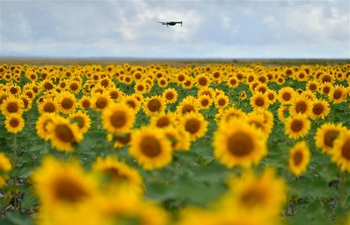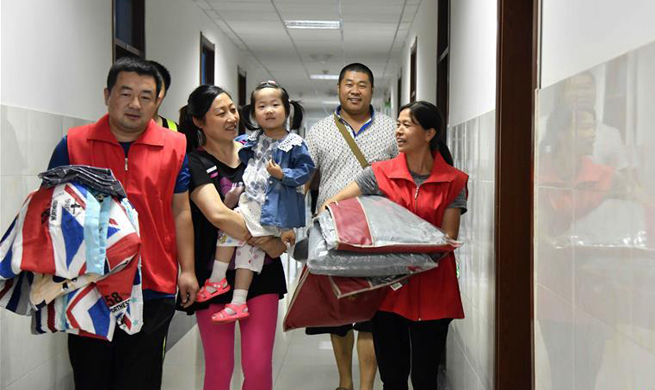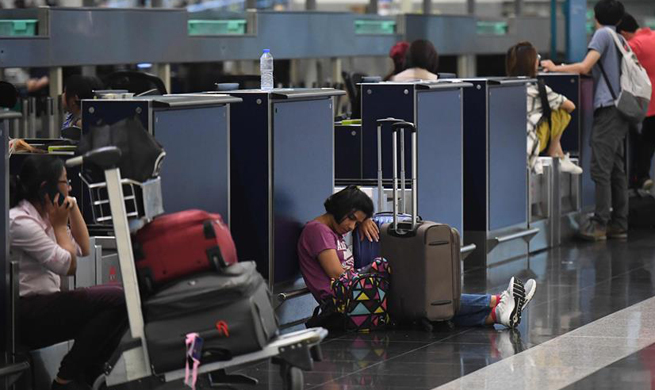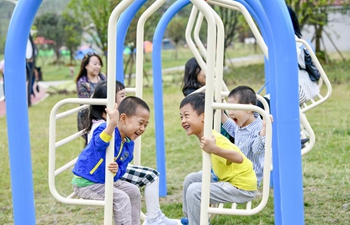BEIJING, Aug. 13 (Xinhua) -- For Tian Kai, a volunteer dedicated to promoting first aid knowledge among ordinary people, it was nothing better than his effort actually saving a life.
Tian donated an automated external defibrillator (AED) to a gymnasium in central Beijing, which helped rescue a 56-year-old man from a fatal heart arrest in March.
He has helped ordinary people learn how to conduct cardiopulmonary resuscitation (CPR) and use AEDs for more than two years.
Currently, less than 1 percent of Chinese adults know how to perform CPR. Meanwhile, the country only had about 15,000 AEDs installed at medical institutions and public places such as gymnasiums, airports and subways by 2018, according to the National Health Commission (NHC).
"If everyone knows how to perform CPR and more AEDs are available, more lives would be saved," said Tian, who was patiently teaching a six-year-old girl CPR at the National Olympic Sports Center on Aug. 8, this year's National Fitness Day.
According to the National Center for Cardiovascular Diseases, China reports more than 540,000 cases of sudden cardiac death a year, most of which occur outside of a hospital.
"When someone suffers a heart attack, the nearest person should administer first aid at once, instead of merely waiting for the ambulance," said Jia Dacheng, an expert from Beijing Emergency Center. "Using an AED will significantly increase the survival rate."
"Public awareness and peoples' first aid skills need to be improved, something we're devoted to accomplishing," Tian said.
Over the past few years, several medical institutions, Red Cross societies and social organizations have organized life-saving skills training.
The last two years saw an increasing number of AEDs in public areas, he said. For example, the municipal government of Shenzhen in south China's Guangdong Province planned to buy 5,000 AEDs and complete the installation by the end of 2020.
An AED map mini-program on the instant-messaging tool Wechat has been launched, enabling users to know where to find ADEs across the country and providing them with tutorials through video clips and pictures.
Efforts were also taken to create a better atmosphere in society and encourage more citizens to voluntarily help others in need.
China's general provisions of the Civil Law, which took effect on Oct. 1, 2017, stipulate Good Samaritans shall not bear civil responsibilities if their emergency rescue behavior leads to those being helped suffering losses, except in cases of gross negligence.
"First aid is not only a medical problem," said NHC official Jiao Yahui. "It needs various circles of society to play a role, including the government, medical institutions and the public."
An action plan for 2019-2030, issued in July to implement the country's Healthy China initiative and promote people's health, urged medical institutions to provide first-aid training for the public and promised to improve medical facilities in public places, including installing AEDs.
"If people are willing to learn emergency rescue like the little girl, Healthy China could be achieved much sooner than planned," said Tian.

















